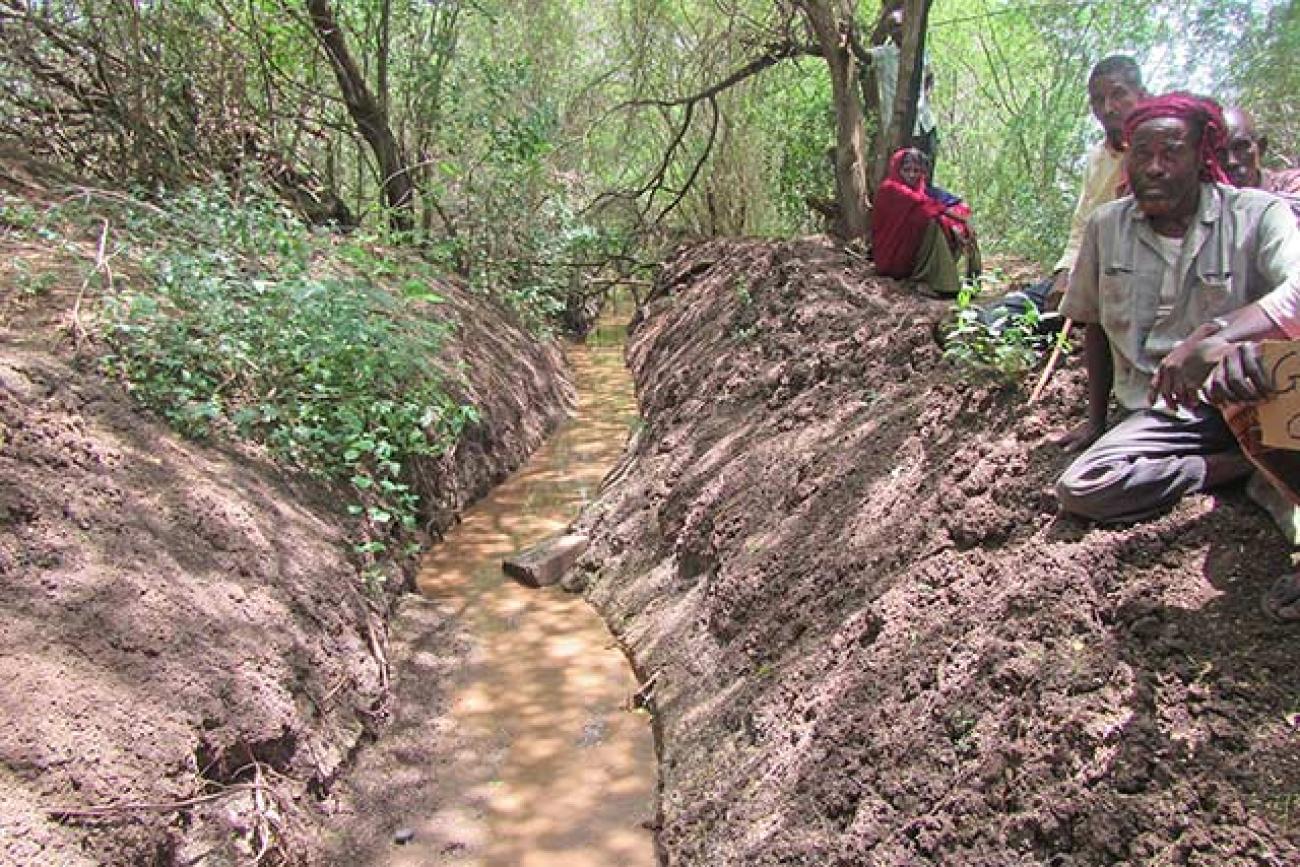Assessing canals and restoring irrigation in Somalia

The aim is to improve production and productivity for smallholder farmers and increasing their market access and competitiveness
A vicious cycle of droughts and flooding has trapped Somalia in a difficult situation over the last few years. Prolonged dry spells have all too often been followed by disastrous floods, jeopardizing or even destroying the livelihoods of many already vulnerable rural Somalis. This is the situation as it stands in Somalia: in the midst of the Deyr cropping season (October–December), following the poorest recorded harvest in southern Somalia during the previous Gu cropping season (April–June), flooding across the country has so far affected almost 600 000 people and displaced more than 300 000.
Emergency interventions to save lives and halt worsening food insecurity are critical, but mid- to long-term investments are equally necessary to mitigate the devastating consequences of extreme weather events on people’s livelihoods and well-being. Supporting vibrant and resilient agricultural value chains in southern and central regions – known as the breadbasket of the easternmost country in the Horn of Africa – is key to facing the consequences of the climate crisis and increasing the resilience of vulnerable communities so they can withstand further shocks.
Somalia’s agricultural potential
With a view to taking this long-term approach to development and thanks to the generous support and funding of the European Union (EU), FAO is currently implementing the Outreach II project together with the Federal Government of Somalia. “On top of extreme weather events, Somalia's agriculture sector is hampered by low productivity, heavy post-harvest losses, poor product quality and high vulnerability to climate change. Yet despite all these challenges – including also widespread insecurity – agriculture in Somalia has enormous untapped potential and could play a critical role in the country’s economic recovery and development,” says Etienne Peterschmitt, FAO acting Representative in Somalia.
The project started this year and will run until January 2022. The aim is to improve production and productivity for smallholder farmers, increasing their market access and competitiveness, and also enhancing governance mechanisms along the agricultural value chain. Hjordis Ogendo, Head of the EU’s Resilience, Infrastructure and Productive Services Sectors, said of the project: “We believe that community-driven agriculture is the engine for rural development, which is key for development in Somalia. Improving the performance of agricultural value chains in particular would benefit a large number of people”.
Canal surveys: 34 km assessed
As a first step, FAO conducted a survey to assess the status, depth and length of 34 kilometres of canals in Lower Juba, of which 24 km are along four main canals and 10km secondary canals. The survey allowed for enough data to be gathered to make sound decisions on the canals’ rehabilitation process.
“Through this project, we want to support riverine farmers to restore irrigated crop production and improve agricultural productivity in the Juba corridor. Historically this area was among Somalia’s most productive, but today it is highly vulnerable to recurrent droughts and flooding, insecurity and access constraints,” explains Reddy Laxman, FAO’s Agriculture Coordinator in Somalia. “The lack of functioning irrigation infrastructure or networks further compounds the root causes of food insecurity and malnutrition in the country,” he adds.
As part of the survey, FAO carried out a Resilience Index Measurement Analysis – known as RIMA – which will help to determine the project’s impact in terms of increased resilience. “All in all, restoring irrigation capacity is key to building resilient agricultural value chains,” says Laxman.
Next steps
The survey results were validated by Federal and State Ministries and other stakeholders during a workshop held in Mogadishu from 9 to 14 November, after which the project entered a new implementation phase. The canals will now be rehabilitated while a capacity assessment is conducted among local Irrigation Committees. In areas where these don’t exist or have disappeared, Outreach II will establish new ones. The potential success of this project would not be possible without FAO’s partners on the ground, who play a crucial role in implementing operations even in highly restricted and severely affected areas.
Outreach II will also make the most of synergies with similar projects in south and central regions of Somalia, such as the EU-funded Pro-Resilience Action (PRO-ACT) and the Sweden-funded Building Resilience in Middle Shabelle (BRiMS). These projects both aim to strengthen agricultural value chains, restore irrigation infrastructure, and reinforce the management capacities of local, State and Federal Government institutions in order to empower Somalia’s agricultural sector.
Link to original story





